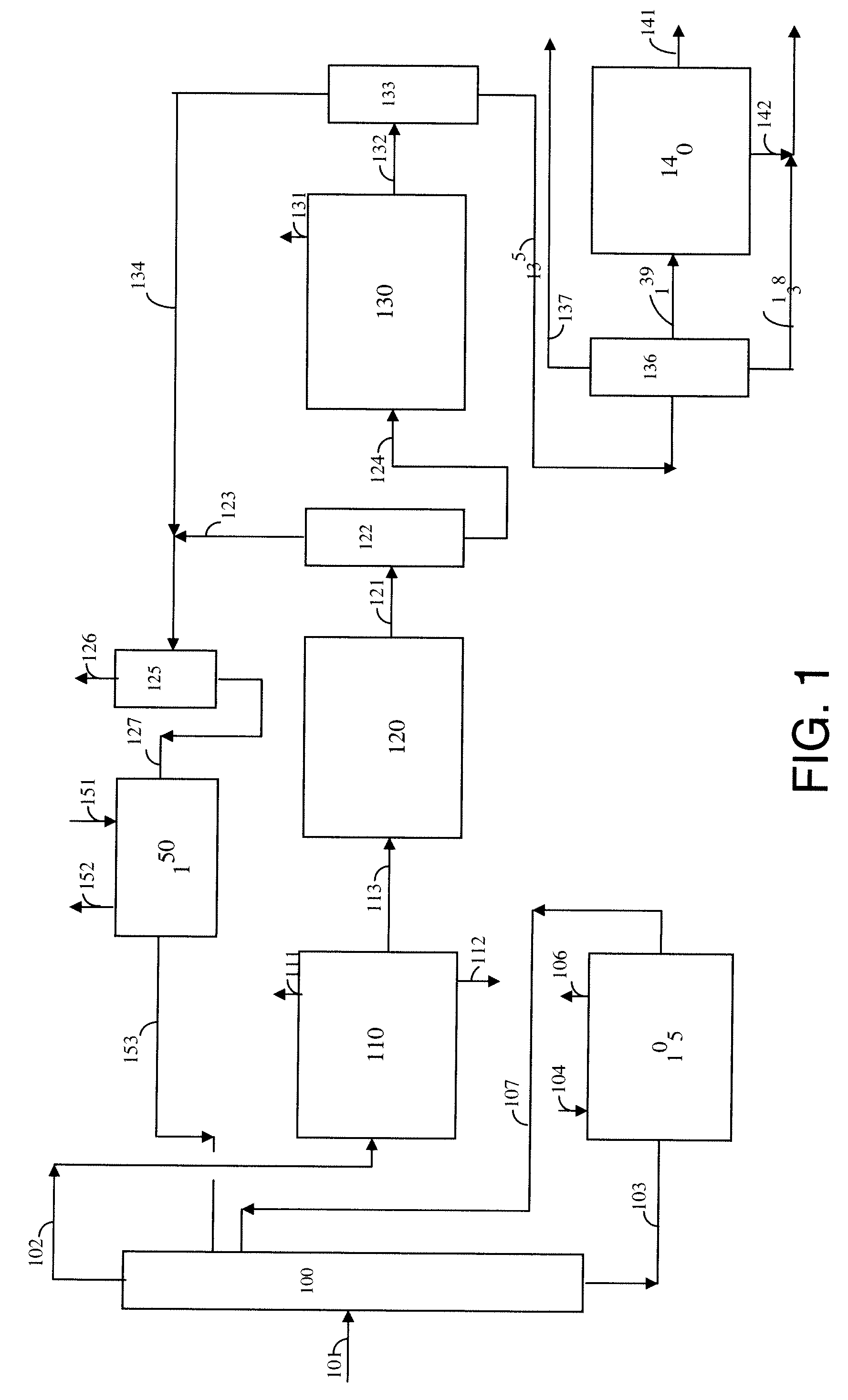Process for para-xylene production from light aliphatics
a technology of para-xylene and light aliphatic hydrocarbons, which is applied in the direction of organic chemistry, chemical apparatus and processes, hydrocarbon preparation catalysts, etc., can solve the problems of not revealing the production of para-xylene, the production process of para-xylene is not known, and the process of para-xylene production is not known
- Summary
- Abstract
- Description
- Claims
- Application Information
AI Technical Summary
Problems solved by technology
Method used
Image
Examples
example 1
[0106]A catalyst comprising 18.6 wt.-% Cr and 3.41 wt.-% K on a gamma-alumina support was prepared following the procedure described in DuPont's patent application US0015026 A1. This catalyst serves as a comparative example of the known art for converting 2,2,4-trimethylpentane or 2,4,4-trimethylpentene to para-xylene, and is designated Catalyst X.
example 2
[0107]A gamma-alumina sphere comprising 0.3 wt.-% Sn was impregnated with chloroplatinic acid (CPA) and 2 wt.-% HCl to give 0.29 wt.-% Pt. The impregnated support then was dried, oxychlorinated in the presence of air and HCl, and finally reduced in the presence of H2. This catalyst of the known art is designated Catalyst Y.
example 3
[0108]A theta-alumina sphere of 1 / 16-inch diameter prepared as described hereinabove and comprising 0.2 wt.-% Sn was impregnated with KCl and chloroplatinic acid (CPA) to give 0.45 wt.-% Pt and 0.70 wt.-% K. The impregnated support then was air calcined, conditioned in the presence of HCl and Cl2, and finally reduced in the presence of H2. This catalyst is designated as Catalyst A.
PUM
| Property | Measurement | Unit |
|---|---|---|
| operating temperature | aaaaa | aaaaa |
| pressure | aaaaa | aaaaa |
| pressure | aaaaa | aaaaa |
Abstract
Description
Claims
Application Information
 Login to View More
Login to View More - R&D
- Intellectual Property
- Life Sciences
- Materials
- Tech Scout
- Unparalleled Data Quality
- Higher Quality Content
- 60% Fewer Hallucinations
Browse by: Latest US Patents, China's latest patents, Technical Efficacy Thesaurus, Application Domain, Technology Topic, Popular Technical Reports.
© 2025 PatSnap. All rights reserved.Legal|Privacy policy|Modern Slavery Act Transparency Statement|Sitemap|About US| Contact US: help@patsnap.com



